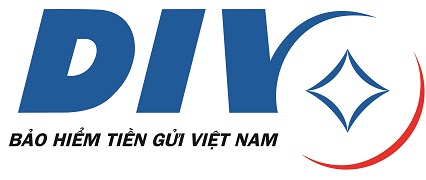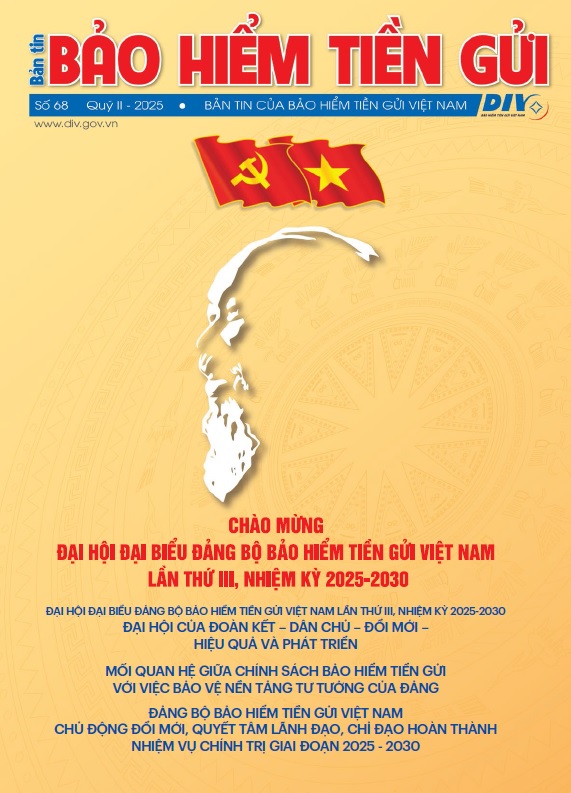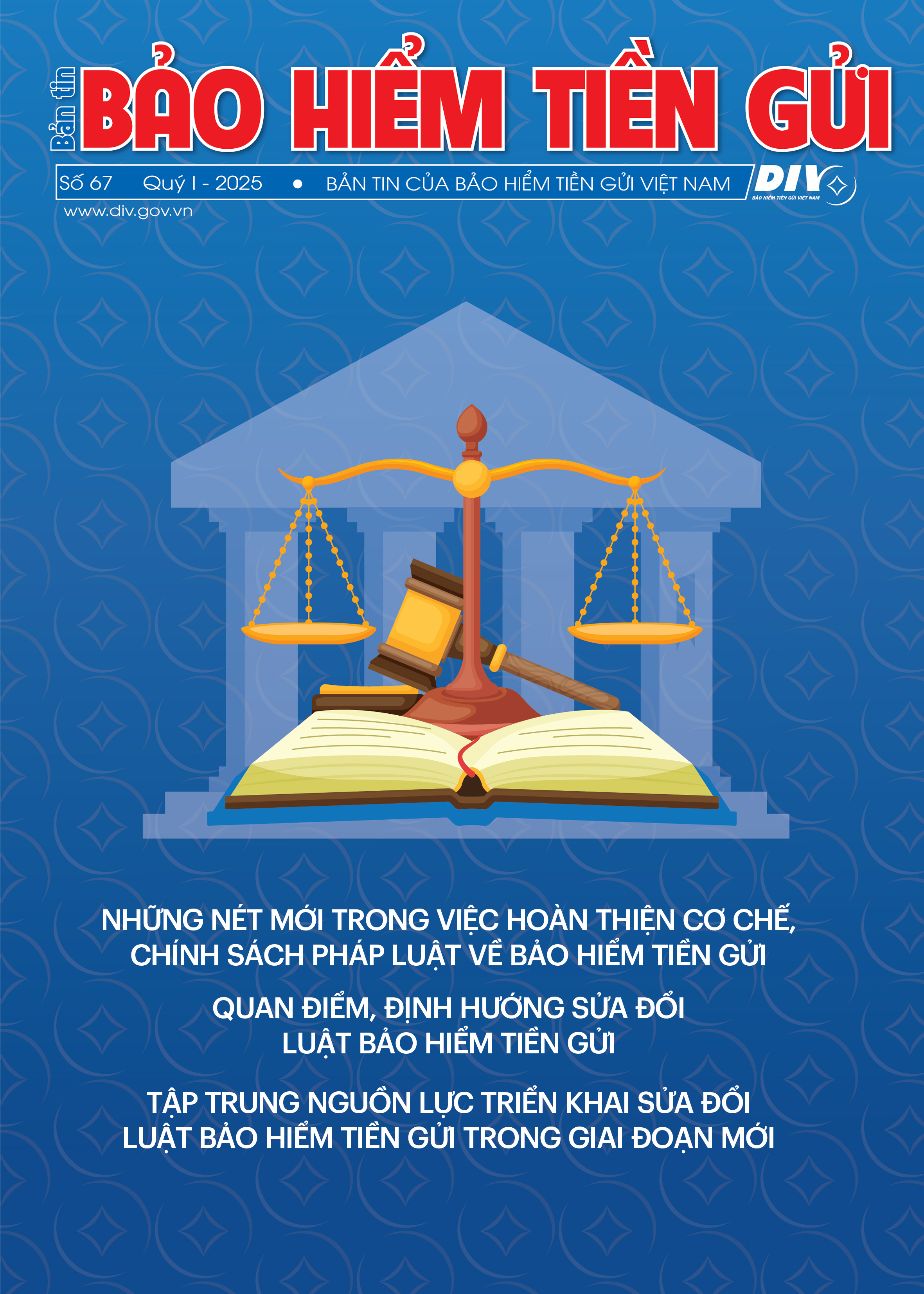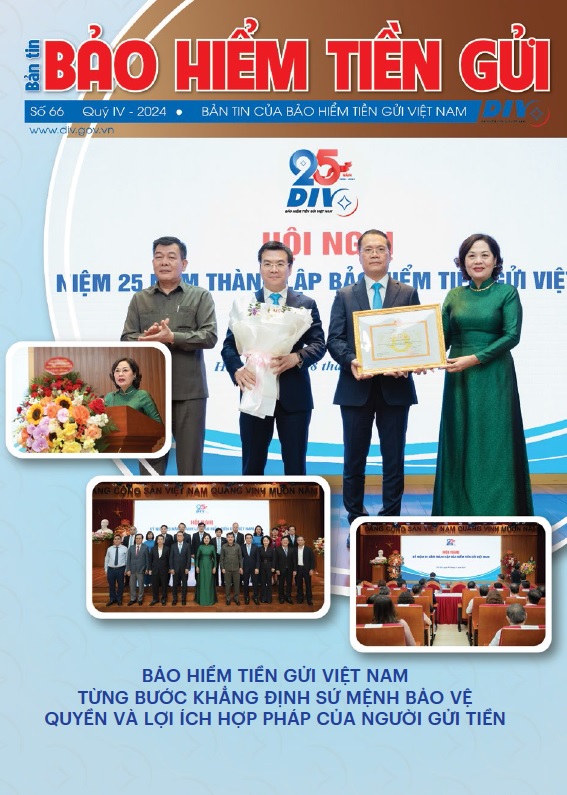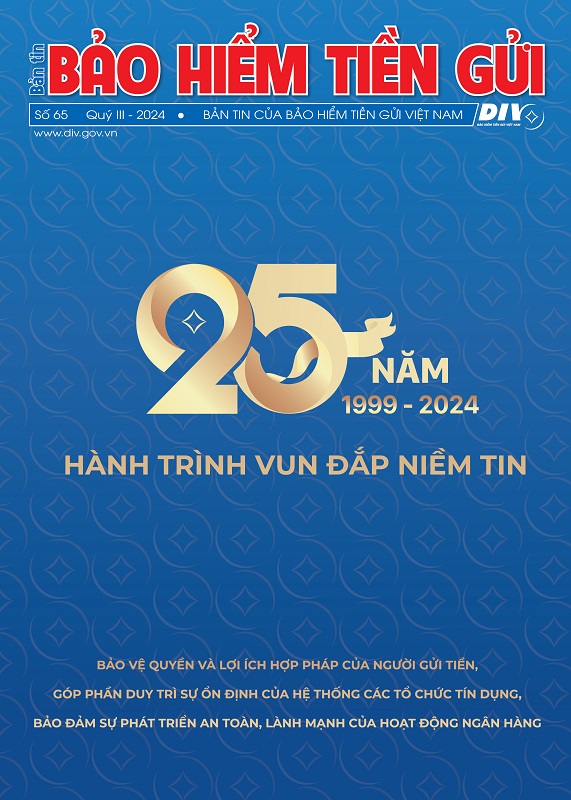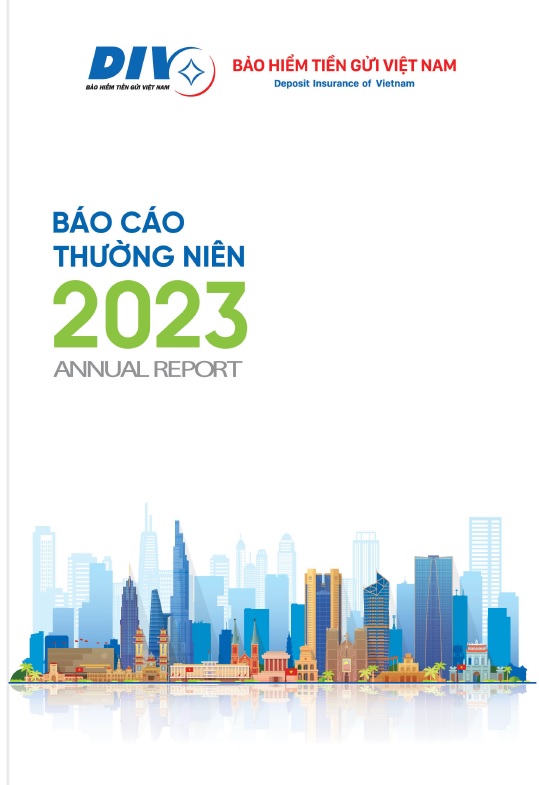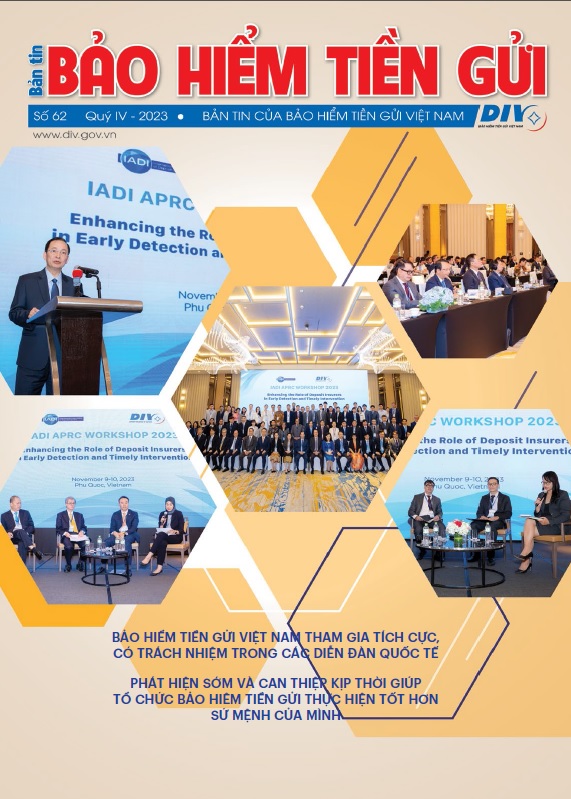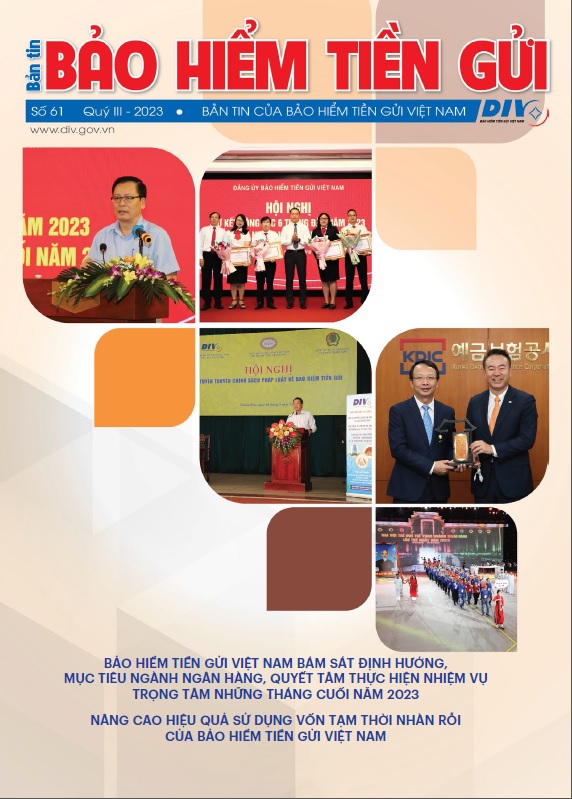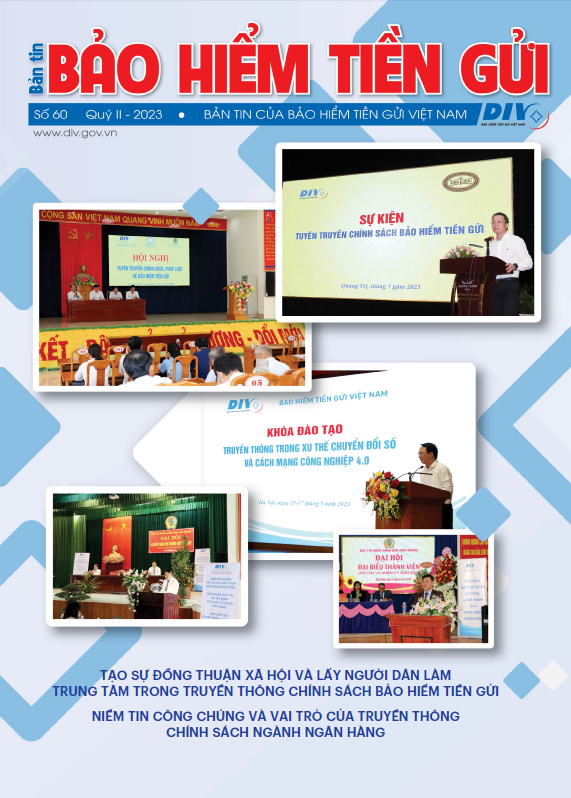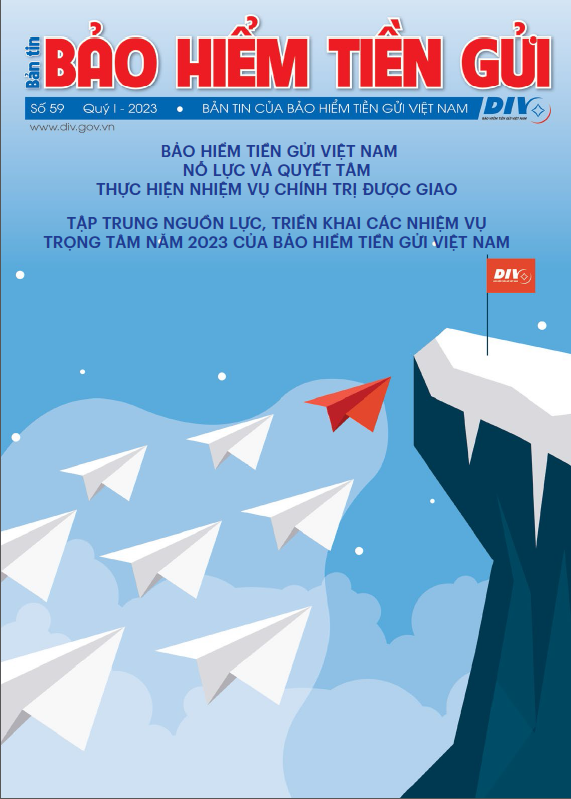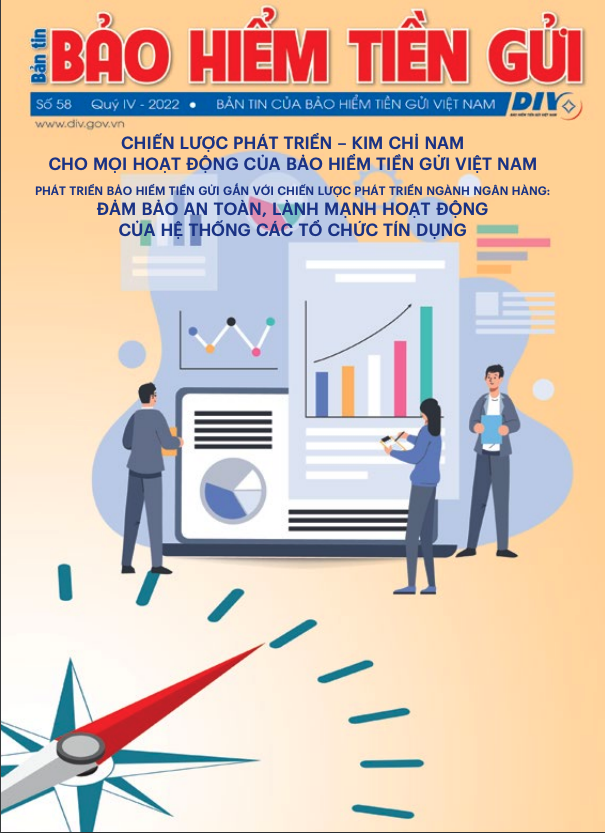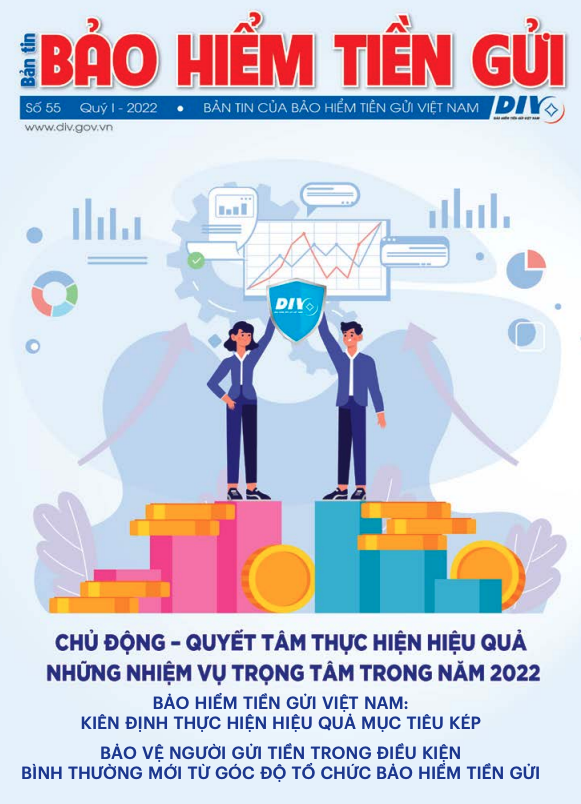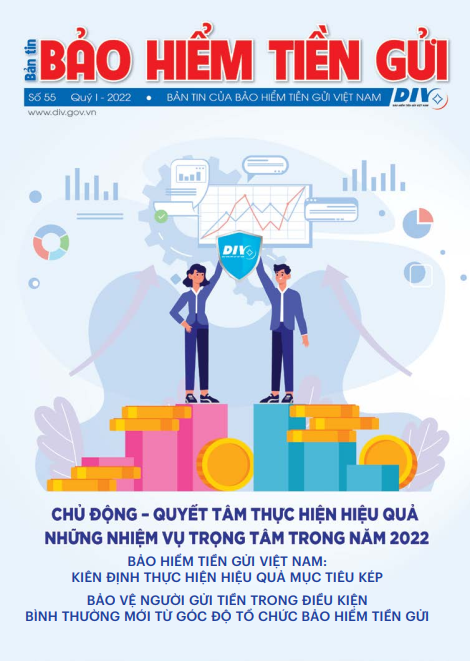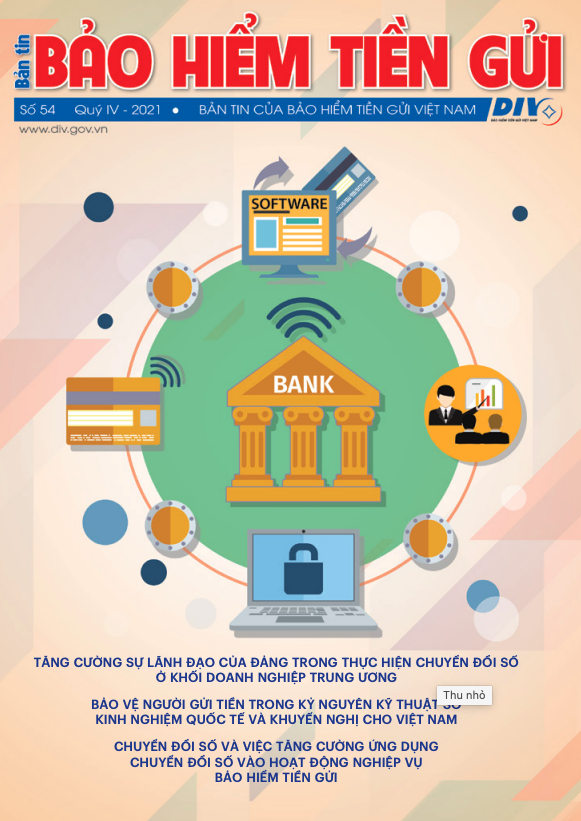Policy orientation and legal framework – core base of a DI system
Policy orientation is strategic points of view and objectives; legal framework is a tool for realizing policy orientation. Therefore, policy orientation is a ground for building a legal framework which is specified into legal rules issued by the State in a strict process and enforced by the State’s powers. The policy orientation and legal framework therefore should be consistent with each other to serve people’s benefits, and at the same time help integrate best international practices with the actual development of the regulated area.
With respect to deposit insurance, the policy orientation is defined as “to protect legal rights and interests of depositors, contribute to the stability of the credit institution system and ensure the safe and sound development of the banking system”. This orientation is in line with international practices and consistent with the objectives set forwards on establishing the DI system in Vietnam.
In the context of broader and deeper integration of the banking system and more choices associated with more risks for depositors, the realization of those two objectives faces many challenges. Particularly, the public policy objectives of DI scheme can not be met without a proper legal framework. Hence, DI policy should be specified in the articles of DI Law, other relevant laws, the documents guiding the implementation of the DI Law and administrative documents within DIV in a synchronous manner for DIV’s better performance.
Among essential parts of DI policy, coverage limit, premium rate and information sharing mechanism are of great importance. Thus, they should be given a priority in the process of completing the legal framework for DI scheme in Vietnam.
DI coverage limit – a tool to maintain market discipline
For a DI system, whether designed as a pay-box or risk-minimizer model, coverage limit is a core policy tool. An appropriate coverage limit is the one with which small and uninformed depositors are fully protected while big depositors may face risks of losing the part of their money beyond the coverage limit if they do not choose a credited, transparent and safe bank to deposit their money with. For instance, a weak bank when facing difficulties tends to raise their interest rates up high to attract deposits. Those people tempted by high interest rates would place their money in the weak and risky bank resulting in losses of their deposits above the DI coverage limit. In this case, if the DI coverage limit is set at an appropriate level and publicized, people who own big sum of money will consider finding a safer bank with stable interest rates for their deposits. This demonstrates how market discipline works and the coverage limit is a motivation for both depositors and banks to adjust their behaviors, which helps to develop a safer market.
As recommended by the International Association of Deposit Insurer (IADI), DI coverage limit should fully cover 90 – 95 % of total depositors; and the ratio of “coverage limit to GDP per capita” should be 2 at least and equivalent to the average ratio in countries which have the same development level of financial services. In Vietnam, DI law states that the coverage limit shall be decided by the Prime Minister on the proposal of the State Bank of Vietnam for each period. This facilitates flexible adjustment of coverage limit. However, according to the Decree 68/2013/NĐ-CP, the coverage limit set in Decree 109/2005/NĐ-CP shall be applied until a new guiding document comes into effect. Therefore, for 9 years since 2005, the limit of 50 million dongs has remained.
Since 2011, given the rapid growth of Vietnam’s GDP per capita, the ratio of “coverage limit to GDP per capita” has gone down below 2, the percentage of fully-protected depositors also reduced to 85%. Thus the coverage limit in Vietnam is lower than the minimum level recommended by IADI. Based on various criteria, the coverage limit in Vietnam is among the lowest in the Southeast Asia and this will be a disadvantage to domestic banks in the coming time of further international integration. For this reason, the coverage limit needs to be raised for better effectiveness of DI policy.
Being aware of the importance of DI coverage limit, DIV has conducted researches and recommended raising the limit up to 200 million dongs –5 times GDP per capita as of 31 December 2013 - which would fully protect 90 % of depositors. According to DIV’s study results, the limit of 200 million dongs is appropriate and compliant with international practices (similar to the average level in the Southeast Asia, in consideration of such factors as inflation rate, GDP per capita, banking restructuring, risk indicators, regional peer comparison, …). Also, this limit would make people feel secure about their deposits at banks. The coverage limit could be adjusted at a right time (up or down depending on the above-mentioned factors).
DI premium – a measure of DI members’ health, a tool for the build up of DI fund.
DI Law stipulates that the Prime Minister shall decide a frame of DI premiums on the basis of the proposal of the State Bank of Vietnam (SBV). Then the SBV shall design specific premium rates for DI members based on assessment and classification of these institutions. Therefore, the current law requires and facilitates the risk-based premium system.
Studies on deposit insurers over the world show that the risk-based premium system has many considerable advantages. It ensures equity among DI members as riskier institutions pay higher rates. As a result, all DI members have motivation to improve their own risk management and apply international practices in their operation. The DI premiums then can be seen as a measure of the health of DI member institutions. In the other hand, reasonable premium rates help build up DI fund in order to be ready for dealing with bank difficulties or failures. At present, in the Southeast Asia, Malaysia Deposit Insurance Corporation (MDIC) has rich experience on the risk-based system which Indonesia Deposit Insurance Corporation (IDIC) has just started.
The recent financial crisis saw many countries facing challenges in finding funds for dealing with failed banks. The US raised premiums, some European countries borrowed money from international organizations. However, both measures are not really optimal choices. Higher premium rates during crisis created bigger burdens on financial institutions, some countries like Greece and Ireland even declared default and asked for loans for bailing out their banking systems.
With the establishment of VAMC, Vietnam has its own solution for dealing with bad debts. In policy discussions before VAMC’s establishment, the Government showed the consistency of its approach of not using state budget to support problem banks. As a result, in future, DI fund may be mobilized in combination with other resources to restructure the banking system. Hence, it is advisable to apply the risk-based premium system, design a practical premium framework to speed up the accumulation of DI fund to reach a target ratio (Target Fund – about 3 % of total insured deposits) during stable economic conditions. The collected DI premiums make up DI fund, which is considered a saving that can be used for dealing with bank problems, avoiding the use of state budget. When the banking system is stable, DI fund is used to buy Government bonds. The fund, therefore, is poured into the economy in forms of development investment. Thus, a proper DI premium policy is a good long-term measure that needs serious consideration.
Information sharing mechanism – important factor to improve effectiveness of DI system.
DI Law states that DIV has function of collecting, analyzing and processing information of DI members in order to detect violating institutions, then making request to the State Bank of Vietnam to promptly deal with violations which threaten the safety of the banking system. For fulfilling this task, DIV must have precise, adequate and timely information about every DI member. The input information is essential for ensuring DIV’s effective collection, analysis, assessment, warning or request.
Presently, DIV is able to access information directly from DI members, government agencies, professional associations or information service providers both domestic and abroad. However, as the information sharing mechanism has not been specified, detailed guidance in by-law documents is needed. It is noticeable that good input information serves as a base for defining a suitable coverage limit, designing the risk-based premium system and building an early warning system which prevents bank failures and helps DIV to avoid using DI fund for paying out depositors of failed banks.
On its own, DIV should prepare a modern IT infrastructure to process input information precisely and quickly, a competent human resource to analyze the information optimally. Presently, the IT system has been improved and upgraded, especially through the project of Financial System Modernization and Information Management System (FSMIMS). At the same time, DIV has also focused on human resource training to improve its staff’s competence to perform the task of supervising risks of DI members.
The year 2013 marked an important step in building a legal framework for DI system in Vietnam. The effectiveness of DI policy in Vietnam will be enhanced if the guiding documents (planned to be accomplished in 2014) are soon promulgated in obedience to DI Law to specify major issues such as coverage limit, premium and information sharing.
In short, DI policy effectiveness will be strengthened if the legal document system is appropriate and specified putting benefits of people, depositors, and financial system safety first. The design of DI legal framework should be considered in relation to other relevant financial policies with a long-term vision so that Vietnam’s banking system will be competitive domestically and internationally.
